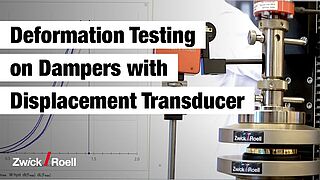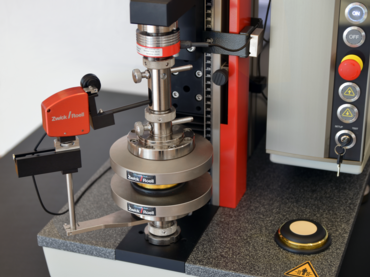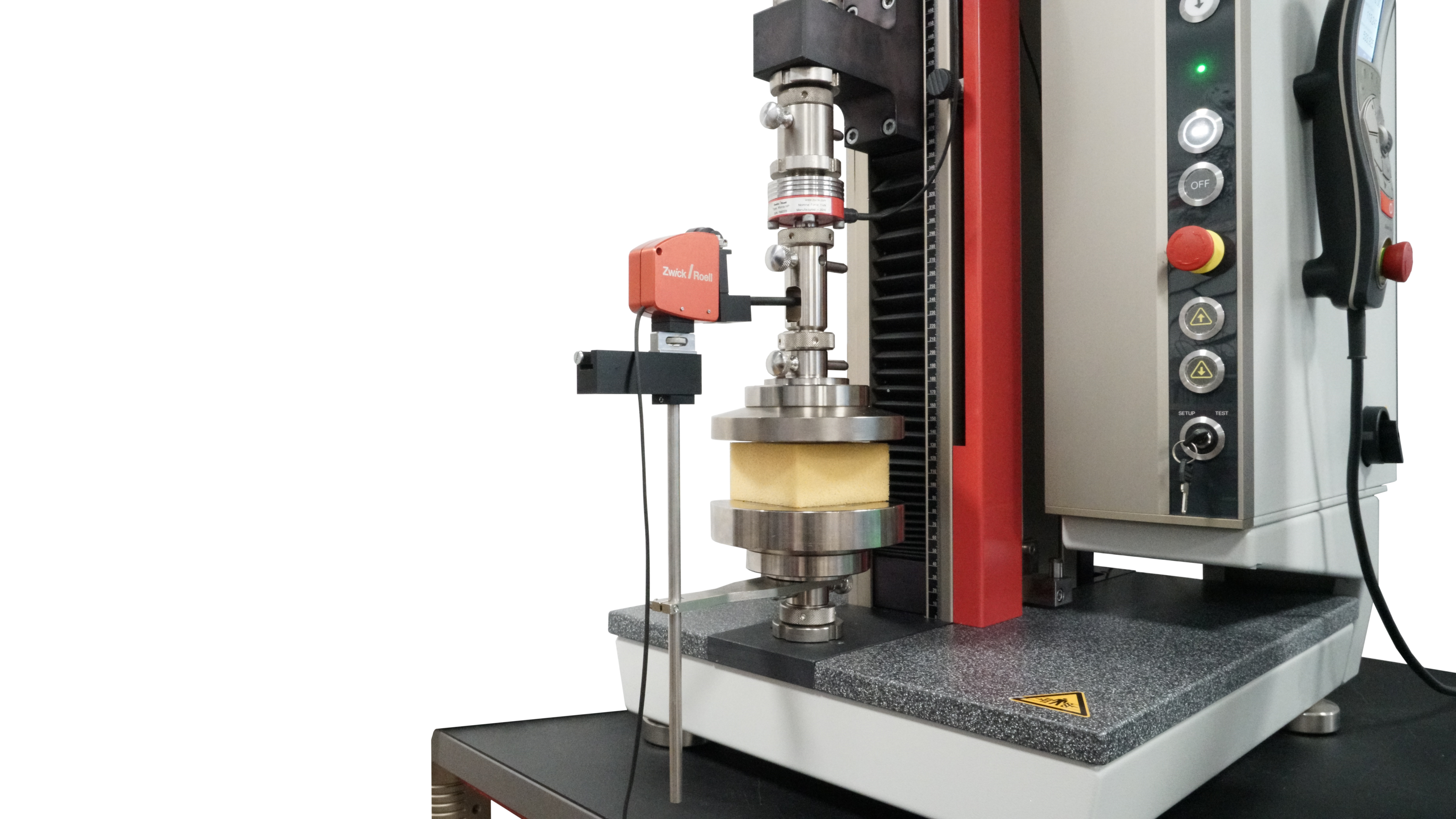Displacement transducer for compression, flexure and components testing
Download- 50 mm
- -70°C ... +250°C
- Plastics
- Wood
- Fiber composite materials
- Compression test
- Flexure test
- Component test
What is a displacement transducer?
A displacement transducer, also known as a displacement sensor, is an instrument for measuring the deflection or deformation of a material specimen under load.
More precisely, the displacement transducer measures the change in displacement. The starting point for this is the contact point between the sensor and the material specimen at the beginning of the test. The strain gauge inside the displacement transducer records the mechanical deformation and converts it into a measurable electrical signal. Other displacement transducers measure inductively or optically—we would be happy to discuss your needs.
The measured change in displacement is then used by the testing software to calculate elongation, compression or deflection.
Reliable and accurate determination of deflection, deformation and settling behavior
A very important factor in obtaining reliable test results is to ensure minimal influence of the displacement transducer on the test. The ZwickRoell displacement transducer ensures reliable test results through secure attachment, precise axial alignment and tracking, and a small increase in contact force that does not affect the test process or the test results.
The displacement transducer measures with high accuracy, independent of the test temperature. All temperature-related accuracy deviations are automatically compensated in every ZwickRoell testing machine.
Reliable test results based on application-oriented design
The displacement transducers have been optimized for reliable test results. Accuracy is not the only thing that counts. The surrounding components and the operator have a greater influence on the results. And these influences on the displacement transducer are largely eliminated through intelligent design:
- The displacement transducer achieves reproducible measurement results thanks to an exact, identical measuring position after locking the sensor. therefore preventing unnoticed measurement errors.
- The change in contact force of the displacement transducer during the test is minimal.
- Deformation effects from the load frame and load cell are excluded. The displacement transducer is directly mounted onto the flexure table or the compression platen.
- Accuracy class 1 to ISO 9513 (guaranteed accuracy of ± 1% of the measured value) and accuracy class B2 to ASTM E83 (based on 50 mm gauge length).
- The ZwickRoell displacement transducers meet these accuracy requirements for tests at ambient temperature and in an expanded temperature range.
- High accuracy in the temperature chamber: temperature-related accuracy deviations are compensated.
Displacement transducer applications
- 3- and 4-point flexure tests:
Plastics, to ISO 178, ASTM D790
Fiber composites to ISO 14125, EN 2562, ASTM D7264, ASTM D4476, ASTM D6272
Sandwich composites to ASTM D 7249
Wood to DIN 52186, ISO 3133, EN 310, ASTM D 3043
The displacement transducers can be combined with all ZwickRoell flexure tables and retrofitted. - Compression tests such as the deformation measurement of seals and components as well as the setting behavior of rubber and elastomers according to ASTM D575, ISO 7743, ISO 815, ASTM D395, ASTM D1229.
The deformation and the setting behavior are measured exactly in the test axis (without parasitic deformation influences), based on the use of special connectors with measurement opening. - Parts and components testing: for example, seals and dampers. With a mechanical interface, the displacement transducers can, for example, be attached to a measuring tripod—even in upside down position—in order to perform component tests.
- Prüfungen unter TemperaturTests under temperature conditions.: In combination with the AllroundLine, all displacement transducers can be used in the temperature chamber (-70 ... + 200 °C). Easy handling and high accuracy are guaranteed.



